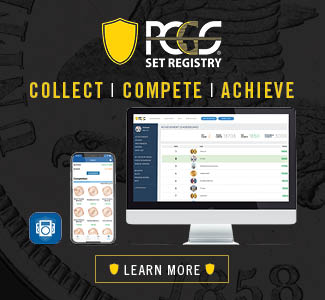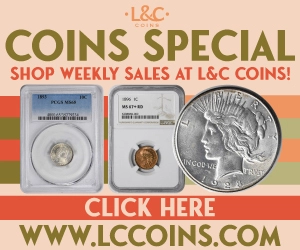On January 5, 2023, Heritage Auctions will present the second session of the historic Harry W. Bass, Jr. Core Collection. This offering includes an array of important and rare coins, many of which were integral “keys” amongst Bass’s extensive holdings. CoinWeek has reviewed the catalog and selected these five coins to watch.
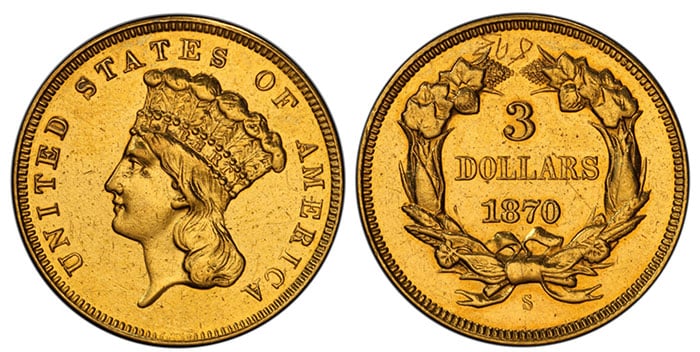
1. 1870-S Three Dollar Gold, PCGS SP50 – UNIQUE
The 1870-S three dollar gold piece (lot 9013) is an iconic rarity in the U.S. federal series, with only a single example known to collectors. A second specimen may exist within a ceremonial casket that was placed under the cornerstone of the Second San Francisco Mint in 1870; however, this coin, if it does exist, remains out of reach for present-day numismatists. As such, the example available is essentially unique. When comparing this ultra-rare coin to other established numismatic rarities, the 1870-S stands apart due to its impaired condition. Scrawled onto the reverse, upside down above the wreath, are the numbers 893. Just who carved these numerals into such a rare coin and for what purpose remains a mystery. Also unknown is how this coin arrived in private hands.
The 1870-S three dollar gold piece was first mentioned in the numismatic press in 1907 when H.T. Van Camp advertised it in The Numismatist. When it made its first public auction appearance, an accompanying “little history” of the coin was given. Since then, the coin has gone on to reside in some of the most significant collections in U.S. numismatics. As a featured coin in the Bass Collection, the 1870-S was a “must-see” coin during its years on display at the ANA’s Money Museum in Colorado Springs.
- Current bid: $1,175,000
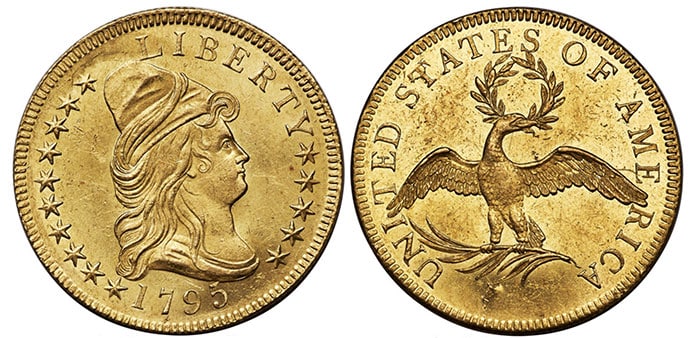
2. 1795 $10 9 Leaves PCGS MS64 – SINGLE FINEST KNOWN
The 1795 Capped Bust Right $10 eagle with 9 Leaves reverse (lot 9058) is one of the rarest early United States gold coins. It features a bust of Miss Liberty on the obverse, capped with a Phrygian cap and adorned in an arc of 15 six-pointed stars. The reverse bears nine leaves that form an olive branch that is clutched in the talons of a small eagle. Dubbed the “King of the Small Eagle type” by expert John Dannreuther, this seldom-seen variety boasts fewer than 25 known examples in all grades (Heritage says between 18 and 22). This PCGS MS64 example is undoubtedly the finest of them all.
- Current Bid: $887,500
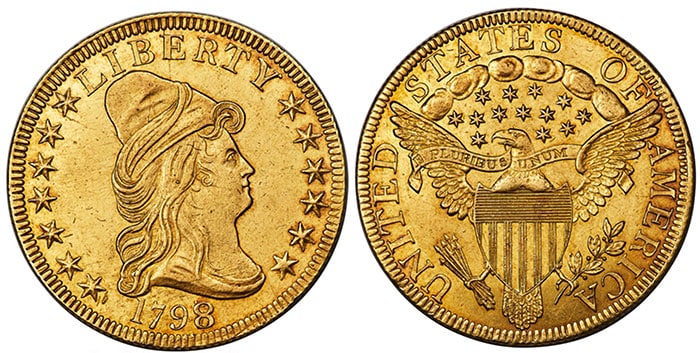
3. 1798/7 $10 7×6 Stars PCGS MS62
Determining the emission sequence of 1798 eagles has long been a subject of interest for advanced numismatists – and this is especially true for overdates like the 1798/7 $10 with 7×6 stars (lot 9061). Unfortunately, Mint delivery records for this period only explain so much, and making an exact correlation between varieties to deliveries requires a lot of guesswork. Numismatist Ron Guth records 17 known surviving examples of the 1798 BD-2 eagle, making this variety one of the rarest die marriages for any Liberty Head gold coin. It is likely that fewer than 500 pieces were produced altogether. While this is only a rough estimate, it provides useful context for collectors when assessing the rarity of this particular coin.
- Current Bid: $562,500

4. 1835 $2.50. PCGS PR67DCAM
The 1836 Proof Classic Head quarter eagle is known to have three varieties, all of which feature Liberty facing left with a coronet inscribed LIBERTY. The obverse also features 13 stars around the peripheral, representing the original colonies and states of the United States.
The reverse of all three varieties possesses a shielded eagle, bearing an olive branch and arrows in its talons, with “United States of America” inscribed. Below, the denomination is expressed as 2 1/2 D., centered. This variety features a broken M on the reverse.
The example offered here (lot 9011) is the finest known by two points; only a lintmark located to the immediate right of F on the reverse distracts the eye.
- Current Bid: $440,000
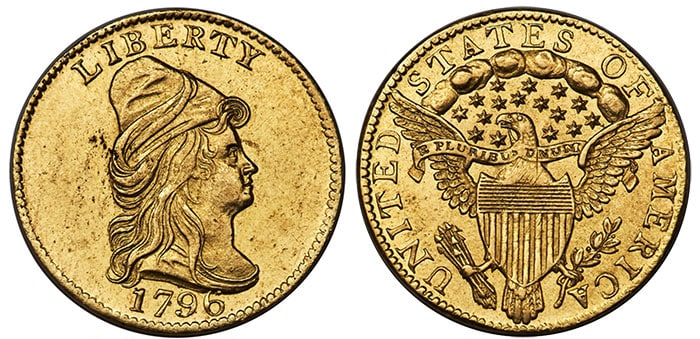
5. 1796 $2 1/2 No Stars on Obverse PCGS MS63
This issue is one of the most sought-after coins in the entire U.S. series due to its historical significance as well as its scarcity and artistic merits. Indeed, it ranks firmly within the 100 Greatest U.S. Coins compiled by Jeff Garrett and Ron Guth with the input of many of the hobby’s top experts. The coin is the first gold coin struck with the Heraldic Eagle reverse and is the first coin to note the admission of Tennessee into the Union, as 16 stars are squeezed above the eagle on the reverse.
Rare in all grades, this Choice Uncirculated example of the 1796 No Stars $2.50 gold quarter eagle (lot 9003) is among the finest known and deserves serious attention as truly uncirculated pieces are seldom offered.
- Current Bid: $410,000


